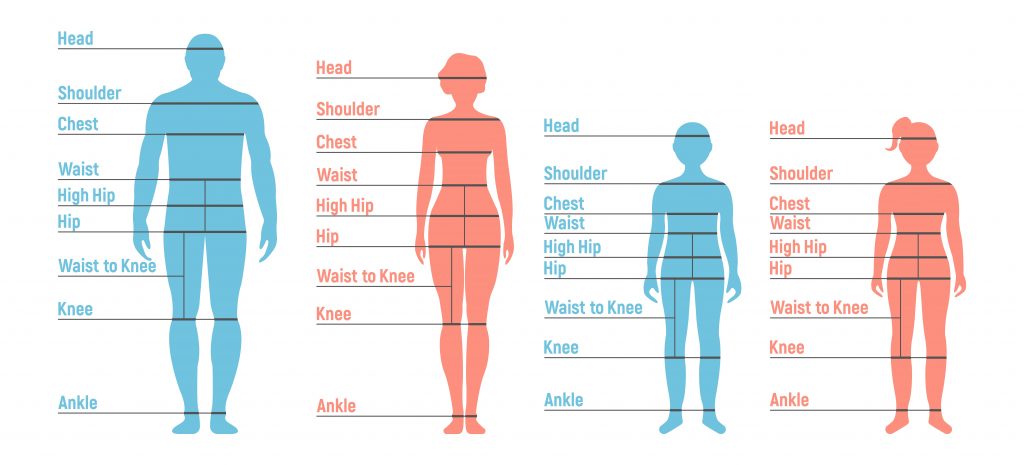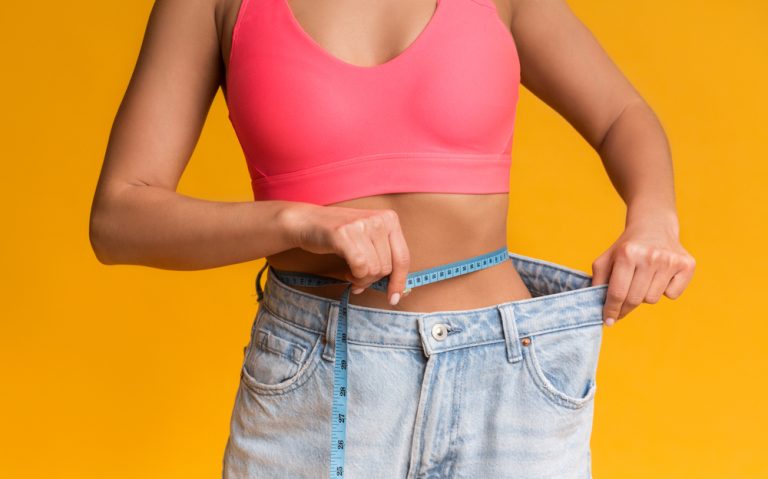For most women who take up training and diet, the first step is to buy a weight scale. They often think that this is the only effective way to control their progress. But this is not the case - weighing can motivate further action, but it can also effectively discourage. So instead of just betting on weight, measure your body circumferences!
Is weight scale lying?
Weight indications are not always true and should not always be trusted. Our body changes differently and the weight can fluctuate significantly throughout the day, it is affected by the menstrual cycle, gaining muscle mass, accumulating water in the body and many more factors.
Our body contains up to 60% of water. The amount of salt consumed, the number of fluids consumed and the menstrual cycle affect the water content. The less water you drink during the day, the more water will be in your body. Even if you are slightly dehydrated, your body will try to keep as much water as possible, and this will increase weight. Excess salt intake also plays an important role in body water retention. During the day you need very little, from 1 to 3 grams of it - a larger amount begins to harm you, including retaining water. The menstrual cycle also affects water accumulation. In the pre-menstrual period, the body retains significant amounts of water - the way out is to drink plenty of fluids, do training, and reduce salt intake.
How do you weigh yourself correctly?
For the weight to be as close to reality as possible, you must follow these rules:
- weigh yourself without clothing
- don't overdo - perform weighing only once a week
- it’s best to weigh yourself in the morning, right after waking up and urinating
- do not drink or eat before weighing
- pay attention to the menstrual cycle
- do not weigh yourself after the training
Weight or measurements?
Weighing is not the only way to control your results. You can also measure your body. Weight alone is the most important criteria for people whose body weight deviates from the norm by more than 5 kilograms.
In other cases, it is better to control the measurement for the following reasons:
- muscle tissue has a very tight structure and therefore weighs much more than adipose tissue. Not only that, but the weight of people training instead of falling can also start to increase because muscles under the influence of regular exercise begin to replace fat;
- dissatisfaction with the figure often comes not from excessive kilos, but from the unattractive appearance of individual body parts, lack of skin firmness, visible cellulite. In this case, it is best to get rid of extra centimeters from the problematic parts of the body, and then the measurements will allow an objective assessment of the results.
How to do measure yourself?
If you are just starting your adventure with training, you must remember that during the first 2 weeks your circumferences may increase, especially around the buttocks and thighs. This is because the muscles that are not accustomed to exertion become overloaded and swell. However, after about 2 weeks, muscles get used to the load, return to their previous sizes and begin to develop in terms of quality and firmness.

You need to understand that your body will become beautiful when your muscles are properly strained and sculpted. Not only that, increasing the volume of muscle mass will make your skin elastic and firm.
What you should measure
- shoulders - in the thickest place, about 5 cm from the shoulder
- waist - in the narrowest place
- belly - in the most convex place
- buttocks - in the most convex place (legs joined)
- thighs - at its widest point, approx. 5 cm below the buttocks
Take measurements once a month. Avoid measuring during menstruation because your abdomen then becomes more convex than normal. Also, do not take measurements immediately after training. It’s best to do it in the morning before the breakfast.






